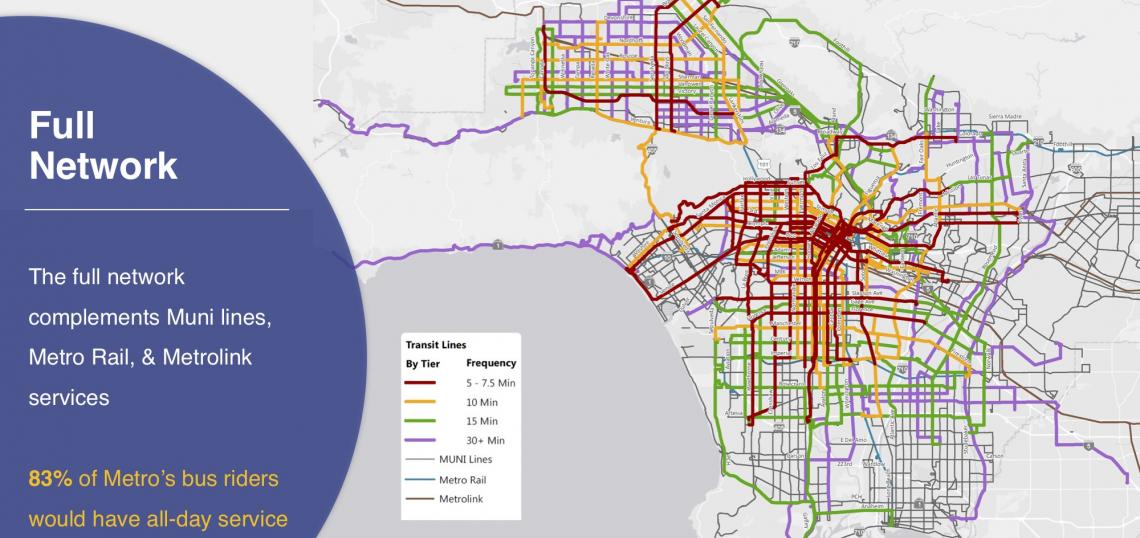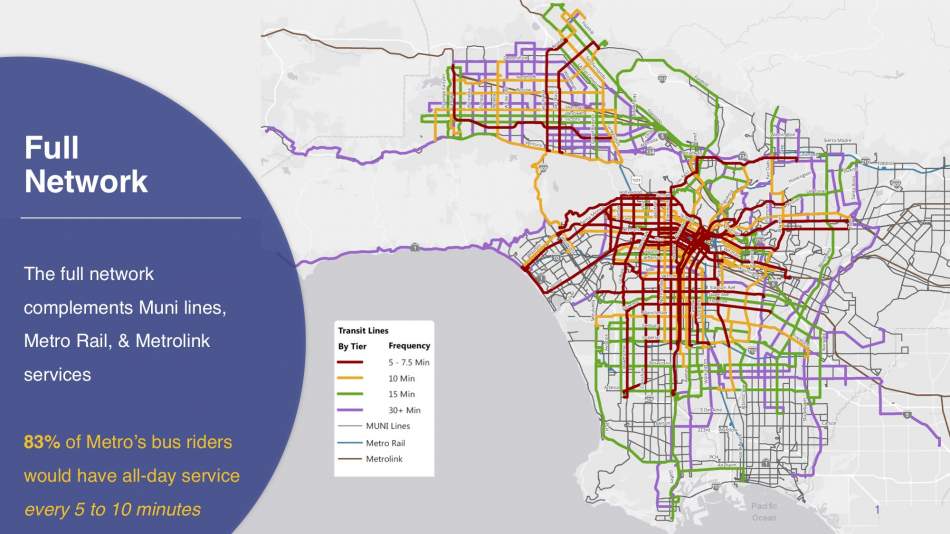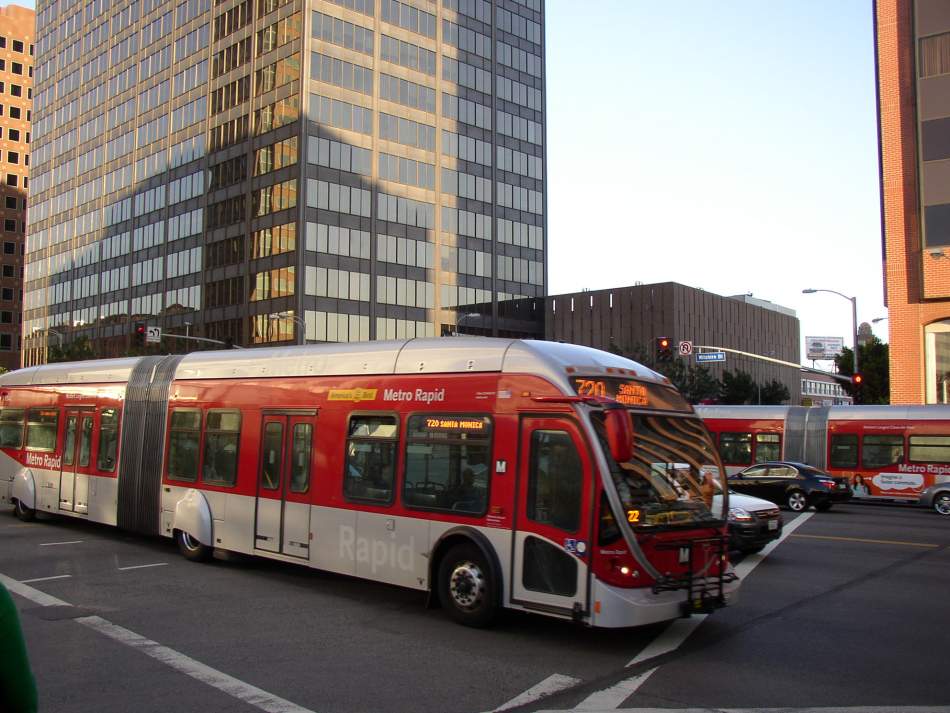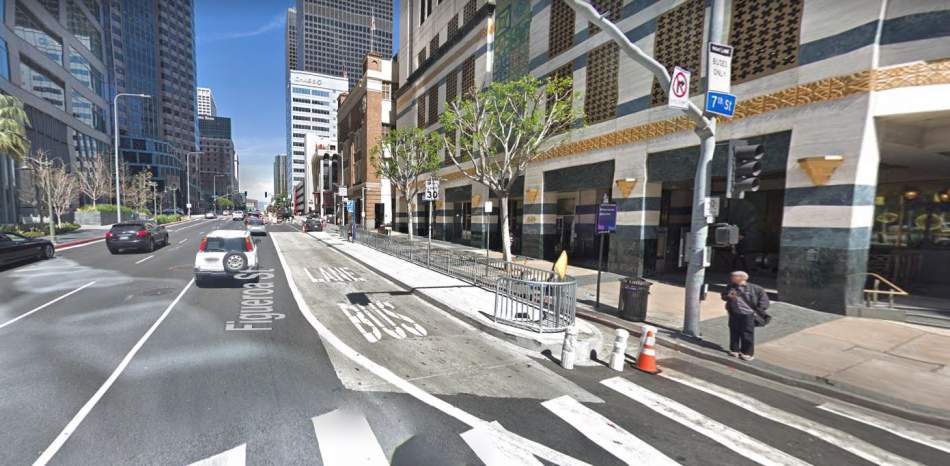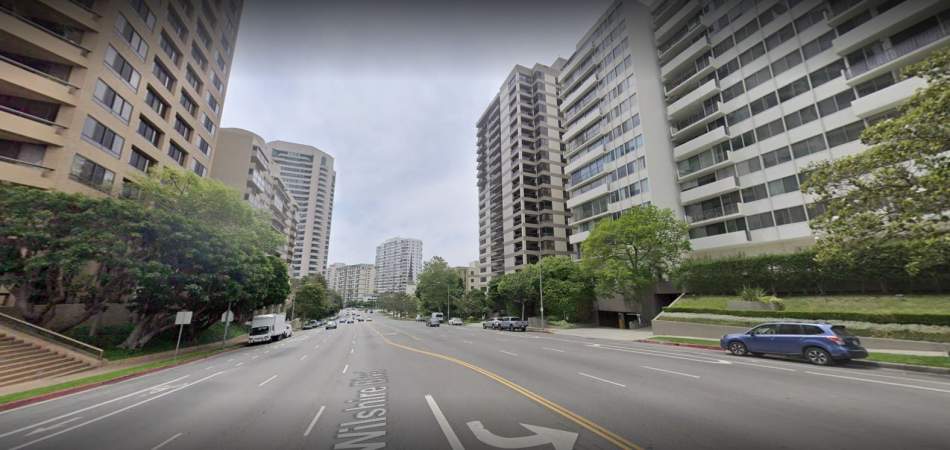A meeting of the Metro Board's Operations Committee gave Board Members an opportunity to provide public feedback on the agency's ongoing NextGen Bus Study.
The draft plan, unveiled last week, is the first substantial makeover of Metro's bus network in a quarter-century. According to The Source, the proposed service patterns would allow buses to arrive every five-to-ten minutes for 83 percent of riders - up from just 49 percent of riders today.
Additionally, the number of bus lines offering service every five-to-ten minutes would increase from 16 today to 29 on weekdays, and from two to 14 on weekends. As a result, the number of Los Angeles County residents living within walking distance of these bus lines would more than double from 900,000 to approximately 2.2 million.
Increased frequency would come at a cost. The number of total stops on most routes would be reduced, resulting in faster door-to-door trips, but also longer walks to bus stops.
Many existing Rapid lines - known for their red livery - would be eliminated and consolidated with overlapping local bus lines, save for the busiest corridors in the system: the 720 (Wilshire Boulevard), the 754 (Vermont Avenue), and the 761 (Van Nuys Boulevard.
More frequent service on these core lines also would come at the expense of some bus service in underutilized areas, which would be shifted to other transit agencies.
New services patterns would also be aided by improved infrastructure, according to the draft plan. The Los Angeles Times reports that the proposal calls for spending $750 million over five years to add bus-only lanes, synchronized traffic lights, and other improvements to speed travel times. Additionally, $150 million would be spent in the same period to improve shelters and passenger amenities at bus stops, as well as implementing all-door boarding and level platforms to ease access.
The NextGen service plan is the result of two years of study and outreach, in which Metro found that bus routes on just 44 corridors accounted for more than 80 percent of the system's ridership.
Metro staff noted that while the Rapid lines were created in the 1990s to provide a speedier trip for commuters, the speed at which they travel relative to local buses result in inconsistent frequencies further from their point of origin. Consequently, buses may bunch and arrive at stops at the same time rather than at scheduled intervals.
Though it remains well-patronized, Metro's buses have suffered from a precipitous decline in ridership in recent years. The approximately 878,000 passengers the system saw each day in 2019 is a sharp drop from an average of 1.14 million daily riders in 2013.
The NextGen pattern could help reverse that trend, boosting ridership by 15 to 20 percent, according to the Times.
Los Angeles City Councilmember Mike Bonin, who chairs the Operations Committee, described the the NextGen Study as a watershed moment for Metro - potentially "more significant than Measure M," the ballot measure which approved a sales tax increase to fund new rail and bus rapid transit lines.
In comparing the NextGen plan to Measure M, Bonin also noted potential political pitfalls. Whereas the ballot measure required coalition building to convince voters to impose a tax increase, efforts to improve the bus system are contingent on the cooperation of individual cities and jurisdictions to implement infrastructure - specifically bus-only lanes. Peak-hour bus lanes on Wilshire Boulevard are interrupted in Beverly Hills and in Westwood's "Condo Canyon," where homeowners opposed sacrificing street parking.
Duarte Mayor John Fasana floated the idea of using bus-only lanes in similar fashion to Metro's ExpressLanes in the I-110 and I-10 Freeways, where in addition to buses and other high-occupancy vehicles, the lanes could be used by private vehicles in exchange for a toll.
Should the Metro Board adopt the NextGen plan, the updated service patterns would be implemented in three phases, starting in December 2020, with a second wave following in June 2021, and the final changes taking place in December 2021.
Click here to learn about more opportunities to provide feedback on the NextGen Bus Plan.




